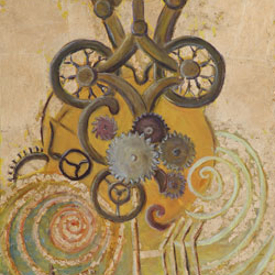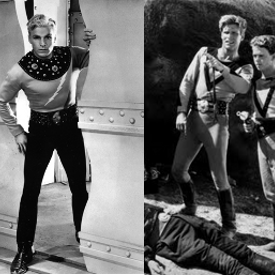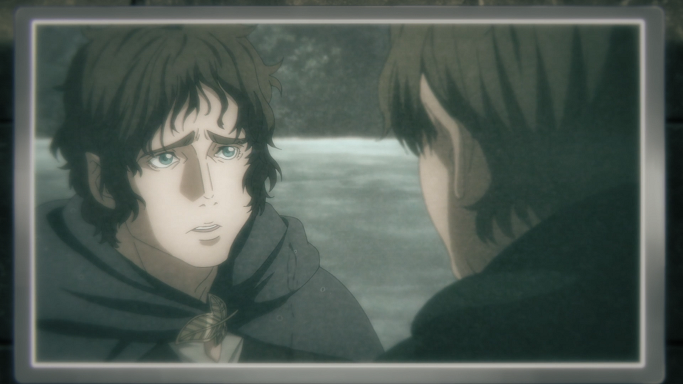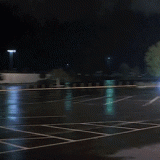Once upon a time, science fiction and fantasy conventions were great places to find, and buy, original art – and, in time – reproductions of art created by the best professional illustrators in the field of SF/F illustration art. Now . . . not so much. What happened? Where did these artists go? And are there still conventions where you can see, and purchase their art? This post continues the discussion……
What Insularity and Time Does . . .
I can’t speak for most Comic, Media, and Gaming conventions (some of them run to make a profit, others run by volunteers) because I have been to only a handful of them, and they were the biggest of their kind (SanDiego Comicon, GenCon) so I’m sure they had characteristics not shared by smaller, local cons. My knowledge and experience lies with science fiction and fantasy conventions I have attended over the last 40 years (which have been many and varied). While I’m sure all genre conventions provide a great venue for fans “to meet, socialize, buy things, play games, show off costumes or props they’ve made, and generally just have a real good time with people with similar interests” (to quote SciFiConventions.com) the cons I’m most familiar with also engender a kind of almost incestuous insularity that over time has worked to their disadvantage, in terms of retaining the loyalty of artists and collectors who have been lured to other sources for buying and selling art, and have benefited from venues that exhibit a less restrictive worldview. Cons’ fear of attracting “mundanes” and attachment to keeping cons “just for us” insiders retarded the expansion of the market for SF art at a time when high growth was not only on the horizon, but left the door open for competitors, who quickly jumped in to exploit a rapidly broadening audience.
The 1980s provided excellent opportunities for freelance illustrators working in the SF and F genre, because the literary marketplace was booming. Art Directors were open to a diverse range of art styles, and the tide rose steadily through the decade for artists like James Gurney, Stephen Hickman, Tom Kidd, Dean Morrissey, Darrell K. Sweet and others, many of whom had a “painterly” Brandywine School-influenced, yet distinctly original, style. B>ut there was also room for something new: the very slick and sharply realistic style of hand and air-brushing made famous by Hugo(s)-winning Michael Whelan and his British counterpart, also Hugo(s) winning, Jim Burns. Thanks to the extreme popularity of the SF/F genre, commercial artists – unlike those in previous decades – were happy to stake their careers on the field, and began to treat their illustrations with new-found respect.

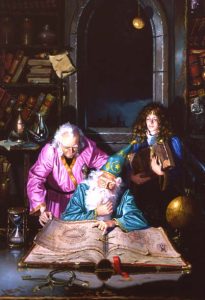
Artists put more effort into these commercial jobs than artists of >previous generations, which translated into larger finished paintings than ever seen before, and ones with none of the graphic short-cuts of the 70s (empty white space for background) standardization of sizes based on printing reduction requirements, and far less of the assymetry in design that book covers had always been known for. And fans quickly picked up on this and started going to art shows to buy art. Like us. Boskone especially was a great place to find art, but frankly (!) just about every local, regional and national convention had shows, with lots of good art.
Cons have always been great at entertaining fans, and delivering some needed exposure to artists….and on both counts, con art shows were successful. At the same time, in my opinion, cons have also been surprisingly successful in retarding the growth of the field. While affording artists opportunities to sell, cons were often run like fiefdoms, with bureaucrats – not art promoters – at the helm of artshows. Con artshows had, and continue to have, arcane rules and traditions, among them (and still true for all but a small handful) not allowing owners to sell their art . . . which prevented any sort of resale/secondary market to rise, upon which the fortunes of any niche collectible depends. Artshow heads thought that allowing re-sales would cause much grief among participating artists – whose newer works would then be competing with older works, potentially selling for less. But there were ways this could be accomplished without penalty to artists showing “new” pieces – it was really long time resistance to change, and aversion to treating artshows as business enterprises that rewarded artists that kept things status quo.
Not allowing collectors/owners to re-sell their art helped keep the prices and supply of more highly valued material in the hands of a small community of collectors and bookdealers, all of whom knew each other and traded, bought and sold (and gossiped) within the community – works rarely changed hands without another collector finding out about it . . . and this was before the days of any online forum or chat room.
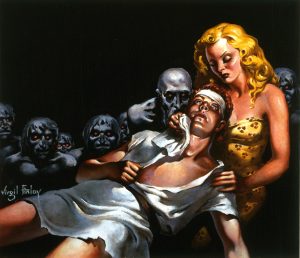
Moreover, by limiting sellers to contemporary (living) artists, convention goers never got to see a range of the “best” historical examples in person, or an opportunity to compare the quality and valuation of such art with the the kinds offered in the art shows. Unless, of course, the convention planned for a “retrospective” exhibit. But in general, the way artshows were run kept higher valued art from circulating beyond a small universe of collectors.
As Bob Weinberg noted in his overview of the field (Biographical Dictionary, 1988), the field for a long time was so small and insular that when an author or collector died, his family usually knew enough about his or her hobby to sell the items to other collectors or bookdealers — who then offered them to clients on their “short list.” Once in a while collectors might advertise their desire to sell in magazines, but for the most part it was a closed circle, and when an owner decided to sell, the art was offered to other collectors the owner knew personally, and not placed in “free play” or offered in the general art marketplace. In their way, conventions simply continued that ‘closed circle’ tradition, and many established collectors of SF/F art to this day have never attended a single convention, or stopped going to cons once they saw the restrictions placed on selling, and what was being sold.
It took years – until the late 1990s (when auction houses began to handle this kind of art, along with comic art, and eBay starting putting buyers and sellers together) – before there was the establishment of a genuine resale/secondary market. Auction houses and eBay filled the economic void and provided the impetus for the market to grow – and the rise of role-playing games and collector card games provided competition of another kind: it stole away the audience. As the costs of attending cons rose, and newer more exciting venues beckoned, SF cons struggled to maintain the level of memberships. As audiences shifted to larger, more inclusive conventions, like Dragon*Con and San Diego Comicon, so did the artists. Some artists managed the transition, switching to almost 100% sales of merchandise and prints and did extremely well. Others could not, or would not produce the products suited for a more general audience. Meanwhile, beginning and established art collectors drifted away from cons. Would they return?
Short-sighted insularity, social change – the rise of the gaming, huge conventions, the Internet, and digital technologies – has made it difficult for traditional, genre artshows to attract artists and art buyers. Now, it’s still the case that only a few people know where “good art” can be found, but the best of it is no longer found at conventions. Or is it?
Tune in to Part 3 for the answer!


